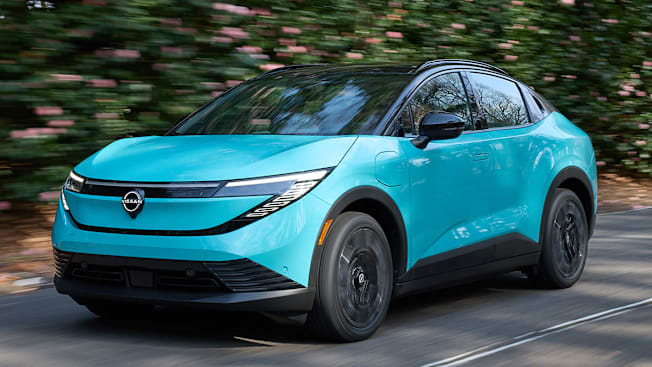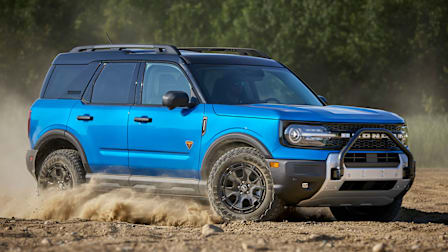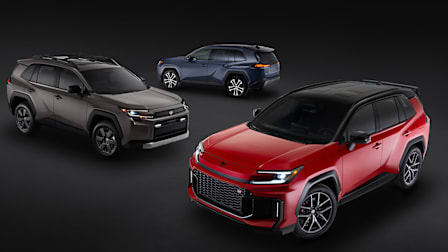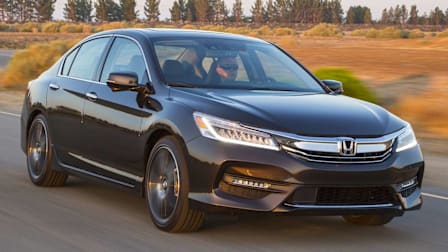Preview: The 2026 Nissan Leaf Is a Low-Priced EV With a 303-Mile Range
Nissan’s EV remains front-wheel drive, gets a NACS port, offers a choice of two powertrains, and finally has a telescoping steering wheel
The redesigned 2026 Nissan Leaf has sleek styling and a slightly higher ride height than the stubby four-door hatchback that it replaces. In fact, it has little in common with the old Leaf, except for its nearly identical external dimensions and an inexpensive price tag. The new Leaf arrives in dealerships in the fall.
It’s been 15 years since the Nissan Leaf first arrived in North America as a 2011 model. While that fledgling EV was unique when it debuted, its long charging time, short range, use of an odd high-speed charging standard, and awkward ergonomics kept it from remaining competitive with a later crop of larger, more comfortable EVs that also boasted longer driving ranges.
CR's Take
Give Nissan kudos for showing restraint with the 2026 Leaf, with its conventional-looking aerodynamic wedge shape and restrained interior. The automaker promises the new Leaf has a more comfortable and roomier interior than its predecessor, and the most efficient version has a claimed 303-mile driving range. Plus, at a time when every redesigned model seems longer, taller, and wider, the 2026 Leaf isn’t much bigger.
With only a small bump in starting price over the 2025 model, the new Leaf still feels like an exceptional value. Having a native NACS port is a good thing, and providing a standard J1772 low-speed charge port means owners don’t have to buy a pricey Tesla charger for home charging.
We don’t love the push-button gear selector mounted low on the center dashboard or the touch-sensitive climate control buttons. Neither is particularly easy to use without diverting the driver’s attention from the road.
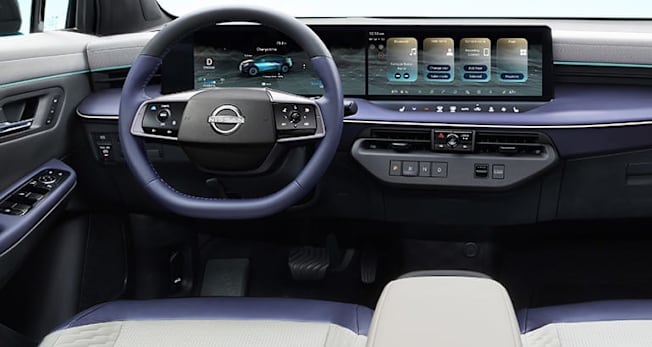
Photo: Nissan Photo: Nissan
Outside
You may think the 2026 Nissan Leaf, with its four doors and an upward-opening tailgate, is a hatchback. However, according to Nissan’s marketing department, the Leaf is a crossover. The automaker continues to embrace the “lifted” trend with the 2026 Leaf, which sits up high like the larger Nissan Ariya EV and Toyota’s Crown and Crown Signia hybrids.
The Leaf has the flat, body-colored nose panel that’s de rigueur on nearly all EVs because they don’t need a grille for engine air intake or cooling. Slim LED lights that extend upward to the fenders brace the panel. A slender light bar connects the LEDs, creating a nearly uninterrupted line of light that spans the width of the Leaf’s nose. At the bottom of the nose is a panel with ventlike strakes and openings for airflow.
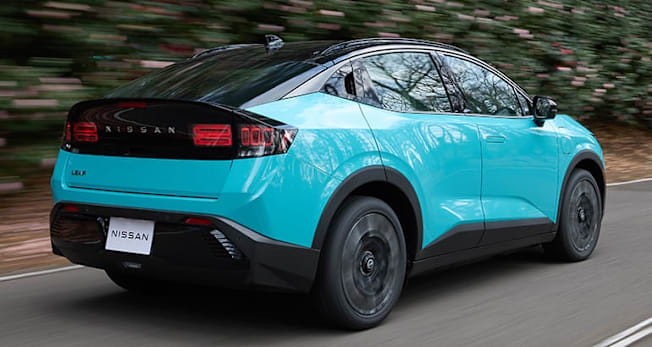
Photo: Nissan Photo: Nissan
Inside
A modern, clean-looking interior greets the driver. Where the previous-generation Leaf had a funky interior with awkward ergonomics, the 2026 Nissan Leaf looks to be much more conventional. We’ll let you know whether it’s as comfortable as it appears as soon as we can sit in one.
Dual screens dominate the dashboard, and appear to be one unit—12.3-inch screens in the S and S+ trims and 14.3-inch screens in the SV+ and Platinum+ trims. It’s similar to how the new Nissan Kicks uses black trim to offer the illusion of a single display panel. Gauges and other pertinent information are directly behind the steering wheel. The infotainment, navigation, settings, and other information are located on the other screen in the middle of the dash, above the touch-sensitive climate controls that look like they are built into the dashboard. Unfortunately, like it has done with the Armada and Murano, Nissan has given the Leaf push buttons for the gear selector. In the Leaf, they sit in a panel mounted at the bottom of the center dash, below the air vents.
The Leaf’s infotainment system is based on Google Built-In, and all trims have standard wireless Android Auto and Apple CarPlay capability. Owners should keep in mind that if they log in to apps in the car, it might share more information with Google than desired.
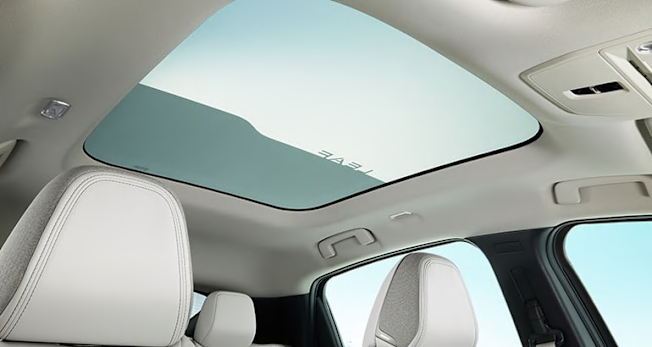
Photo: Nissan Photo: Nissan
A slim center console sits between the two front seats but doesn’t connect to the dashboard. The result is an open space for storage and a less closed-in feeling than if the console extended all the way forward. That could allow items on the floor to roll over to the driver’s side and interfere with their use of the brake or accelerator pedals.
Thankfully, Nissan has given the new Leaf a telescoping steering wheel. The first- and second-generation Leaf lacked this near-universal feature, forcing some drivers into an uncomfortable driving position.
Nissan says the front seats were designed to provide more rear legroom. That’s important because the new Leaf has the same wheelbase as the current model, which we found to have a snug rear seat. We hope the change doesn’t affect front-seat comfort. An electronically dimmable panoramic roof is optional.
According to Nissan, the cargo area has 20 cubic feet of space behind the raised rear seats, and 55.5 cubic feet with the seats lowered.
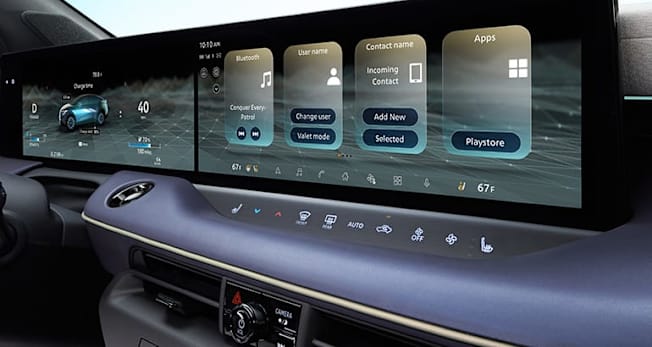
Photo: Nissan Photo: Nissan
What Drives It
The 2026 Leaf will offer two different electric powertrains. When the EV launches, the S+, SV+, and Platinum+ trims will come with a 75-kilowatt-hour battery pack and a 214-hp/160-kilowatt electric motor that drives the front wheels. Nissan’s range estimates are S+, 303 miles; SV+ 288 miles; and Platinum+, 259 miles.
A lower-priced S trim is scheduled to arrive in the spring of 2026. It will have a 52-kWh battery pack and a 174-hp/130-kW electric motor. Nissan has not released a range estimate for this powertrain.
Drivers can charge the Leaf on Level 1 and Level 2 AC chargers using the J1772 port on the driver’s-side front fender. The NACS charge port is located on the passenger’s-side front fender, allowing the Leaf to charge at Tesla Superchargers and any DC fast charger that supports the NACS standard. Nissan says the Leaf can charge at up to 150 kWh and claims that at compatible Level 3 chargers, the Leaf can go from 10 percent charge to 80 percent in 35 minutes, depending on ambient temperature, battery temperature, and other conditions.
The CCS (Combined Charging System) DC fast charging standard is not supported.
The Leaf is the first Nissan to offer the Plug & Charge system. This subscription system allows drivers to plug into a compatible charger and start a charging session without connecting through an app or swiping/tapping a credit card. Drivers have to use the MyNISSAN app and create an account with payment information.
That app also gives drivers access to the Nissan Energy Charge Network, which allows them to find chargers, see their availability, and pay for charging.
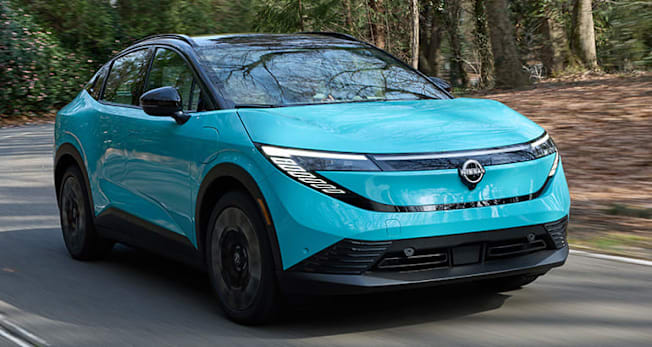
Photo: Nissan Photo: Nissan
Safety and Driver Assistance Systems
The standard Nissan Safety Shield 360 system includes automatic emergency braking with pedestrian detection, AEB that works at highway speeds, blind spot warning, rear cross traffic warning, rear automatic braking, lane departure warning, and lane keeping assistance.
All versions come standard with the ProPilot Assist active driving assistance system, which combines adaptive cruise control and lane-centering to keep the Leaf centered in the lane while maintaining a set speed and distance in relation to the vehicle ahead.

















